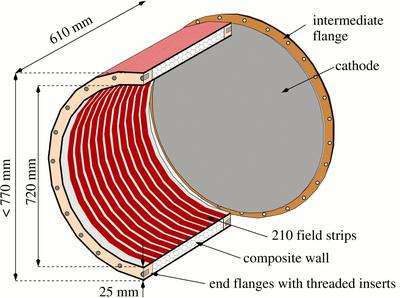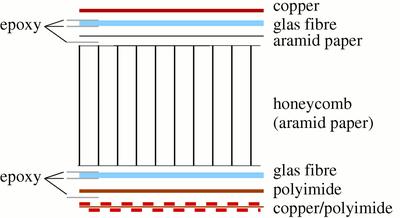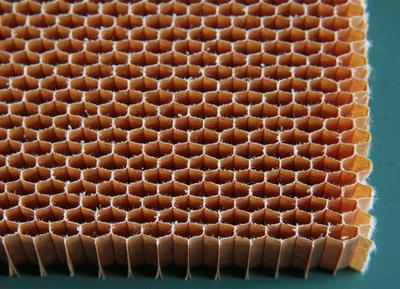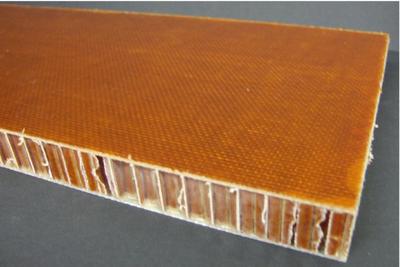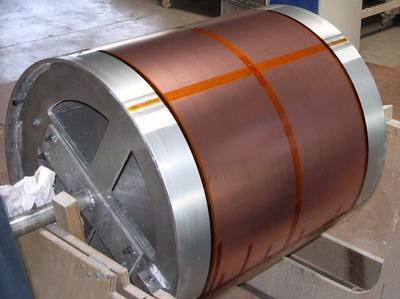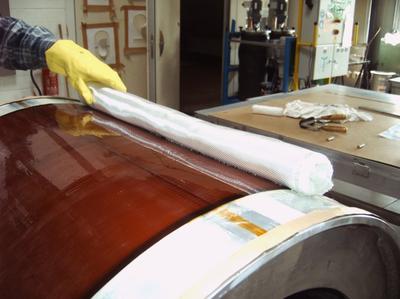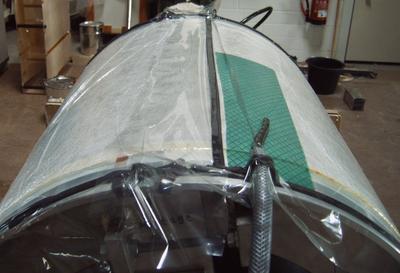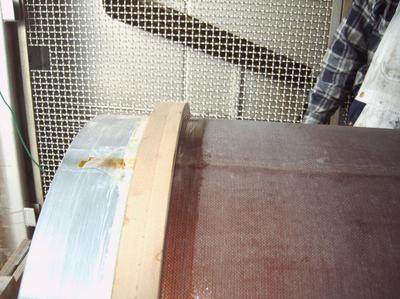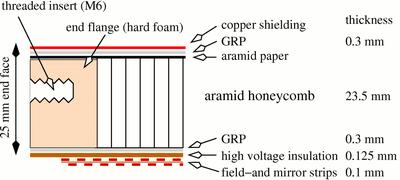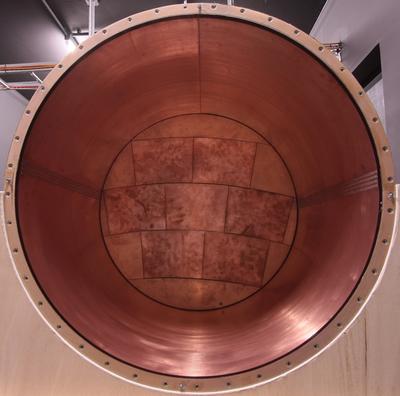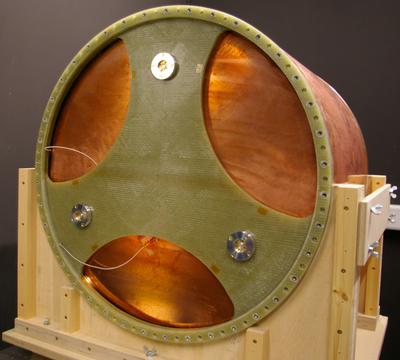The Fieldcage for the Large Prototype
Overview of the design of the field cage
The chamber has an outer diameter of 770 mm and a length of 610 mm. The 25 mm thick walls are build up in several layers - the main component is a sandwich of an aramid honeycomb and glass-fiber reinforced plastic. This sandwich is terminated at both ends
with end flanges made from a hard foam material
Materials
Aramid honeycomb material samples: the composite walls of the LP use aramid honeycomb as spacer material. In the LP development phase of the LP, sample pieces of the wall have been used for mechanical and electric tests.
Over expanded honeycomb has been used for the construction of the LP wall. The modified cell structure of the honeycomb increases the flexibility of the material perpendicular to the direction of the the expansion. This allows for the construction of round structures.
Construction of the Chamber
Construction of the field cage: The layers of the field cage wall produced on a forming tool. This mandrel is 75 cm long with a diameter of 72 cm and was specially prepared for to fit to the reproduced field strip board. After-wards the layer sequence of the wall was laminated onto the field strip foil - including the hard foam end flanges. When the field cage was finished, the end faces were machined over and the diameter of the mandrel reduced by a few millimeters to take of the finished TPC barrel.
The final field cage
More detailed information about the field cage for the Large Prototype can be found in the following EUDET memos:


